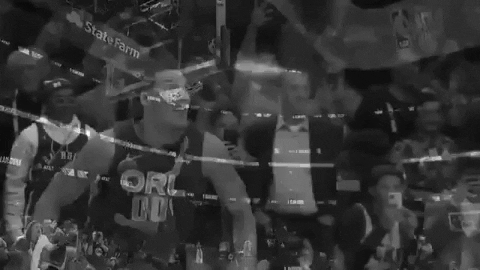MagicMatic wrote:I don’t disagree with your assertions to talent acquisition, league trends, and probabilities. Where I disagree is the idea that it is essential to acquire a player(s) that vault organizations into that level of conversation. It can be done finding guys like Jokic, Giannis, etc., but that is the exception and not the standard.
Paul George doesn’t stay in OKC without Westbrook (drafted #4) and Toronto doesn’t land Kawhi without trading DeRozen (drafted #9). That’s the nature of the league. Porzingis probably doesn’t view Dallas as a good destination without them drafting Doncic (#3). You get the point... etc etc.
Again, you aren’t wrong that trades, free agency, and the draft are the ways of improving. However, the first two options mean and provide far less without having that foundational player. Yes, it’s not viable to have an entire team of youth having to pay them all at the same time. Decisions must be made, but those are easier decisions to make with multiple years of data on rookie contract players. That is far easier than making a bold trade for an oft injured vet on declining value or adding role players with specific skill sets in free agency.
The window is important, like you said, because of players pushing their way out on their own terms. Also, i agree that it matters that you have to field a competitive roster around them. That being said, there are of course a number of examples of franchises making bad decisions and failing to construct viable rosters around their stars. The Twolves, Pelicans, Wizards, and Knicks are all examples of this.
After finding that cornerstone player it all comes down to winning and building around them. Orlando doesn’t have that player, so it’s my opinion they continue searching instead of treadmilling. There is no one true way of building a contender. However, finding an elite two way player that you can build around is a good place to start.
Actually no, it is not the exception, it is literally how nearly all contenders are constructed...trades + FA + draft/development.
Paul George did not join OKC - he was traded there. He forced his way out of the team that drafted him. If he was a free agent, he would be a Laker.
He stayed on in OKC because once LeBron joined LA he didn't want to be turned into role player in the LeBron sideshow...just like all the other top FA's that all stayed clear of LA that summer. AND, conveniently left out of your statement was that OKC had just been dumped by Durant
their "centerpiece" and most important player they tanked for. OKC was forced to supermax Westbrook to salvage the situation...the results are they've been an easy out 1 first round team two years in a row and are in comically deep luxury tax - entering next season with a LOL $149m dollar payroll...all are repercussions of clustered drafting and the bad chemistry and cap issues that creates.
Kawhi forced his way out of the team that drafted him. Even the most respected franchise in the NBA can't control player movement. Also, not only was Kawhi a late pick, but so was DeRozan. The 9th pick isn't a high lottery pick...you have constantly harped about how the Magic failed to tank properly with picks in the 5-6 range. Now somehow the 9th pick is this amazing pick were you can find a "centerpiece" that allows you to trade for an MVP?
You assume that drafting is only way to acquire a foundational player. It is NOT. Houston and Boston are two key recent examples of that. Both franchises refused to "intentionally lose" (put all their eggs in the draft basket)...instead they chose to stay competitive (what you call treadmill/fringe playoff) and they built up the value of ALL their assets in that context and gradually flipped up until they had the right combination to strike when the right opportunity arose.
Years of NCAA data
IS NOT more informative than actual NBA data from players who have actually played vs NBA competition AND fyi most also have that NCAA or overseas data on top of that.
Those teams you say made bad decisions...were forced to make those decisions because of the built-in financial timebomb in cluster drafting, and the culture-of-losing built into the mechanism of cluster drafting.
Acquiring a player like Conley is exactly how you build the value of your assets. You put them next to a player whose value in the NBA is high because of his reputation of making the players around him better. You improve development of everyone on roster, increasing the likelihood of either developing that "centerpiece", trading for that "centerpiece", or making free agency more appealing to acquire that "centerpiece."























